Tom's Guide Verdict
Singles or couples who have counter space and disposable income will enjoy the convenience of the June smart oven.
Pros
- +
Automatically recognizes food
- +
Clear door lets you see food cooking
- +
Records time-lapse of process
Cons
- -
Large
- -
Expensive
Why you can trust Tom's Guide
Do I need a smart oven? No. Did I want one after testing the June? Yes. And after smelling and tasting the chicken, steak, pizza and cookies I made, a lot of my coworkers did, too.
June’s smart oven has a camera built in that can automatically identify food, and then tell you the best way to cook it. Coupled with a smartphone app packed with recipes, the June helps simplify and speed up the time it takes to prepare dinner – or breakfast or lunch, for that matter – but not everyone will be able to stomach its price.
Editor's Note: June increased the price of its oven to $699 from $600 due to tariffs.
Design
Much larger than the Brava (17.3 x 16.4 x 11.3 inches), the June smart oven, which measures 19.6 x 19 x 12.75 inches, will dominate your counter, so those with limited counter space might want to think twice about getting one.
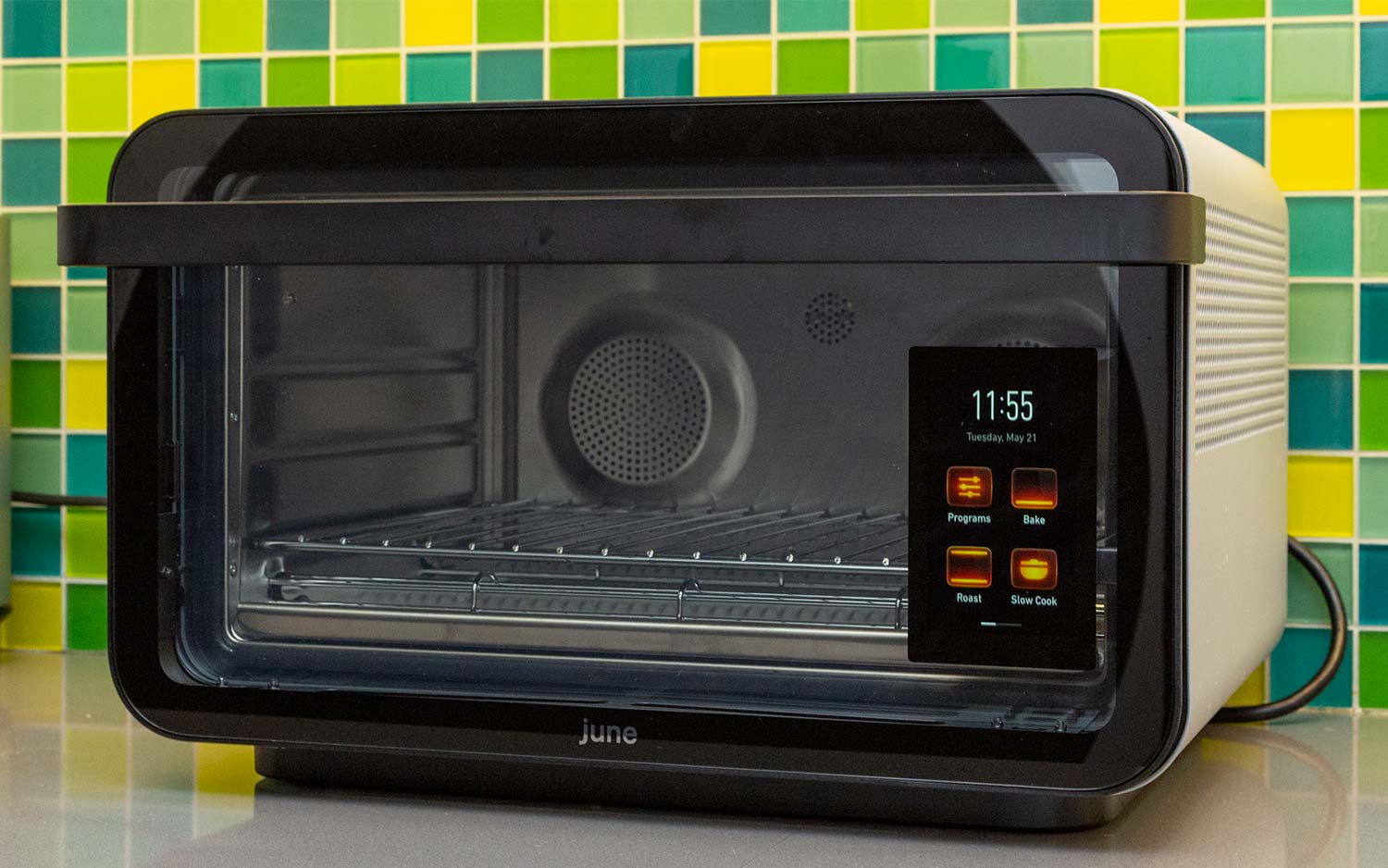
Unlike the all-metal Brava, the June looks more like a traditional toaster oven, due mainly to the fact that its door is glass, so you can peer in and see what you’re cooking without having to open it. This feature alone elevated the June above the Brava in the eyes of many a curious officemate.
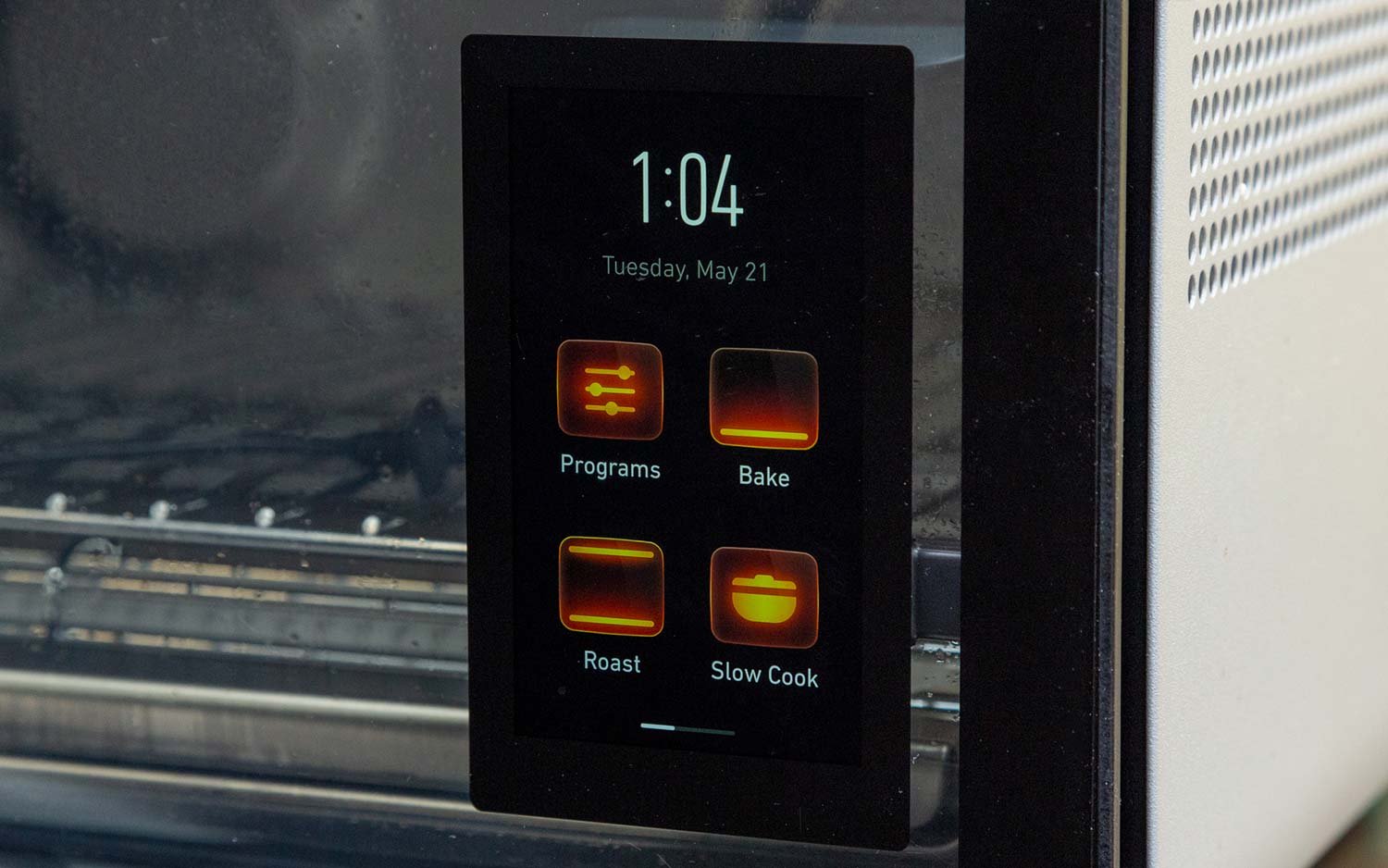
Inset into the lower-right side of the door is a color touchscreen that lets you control the June and look up recipes and such. It’s larger than that on the Brava, but taller people (such as myself) will have to stoop down a little to use it.
It was pretty awesome to slide something into the oven – say a bagel – and have the oven instantly recognize what it was, and suggest how to cook it.
Inside, on the bottom of the stove, are two carbon heating elements, and four more on the top. These elements are somewhat exposed, so you have to be careful not to hit them with anything. Underneath is a metal drip tray — something the Brava lacks — which makes cleaning spills a bit easier.
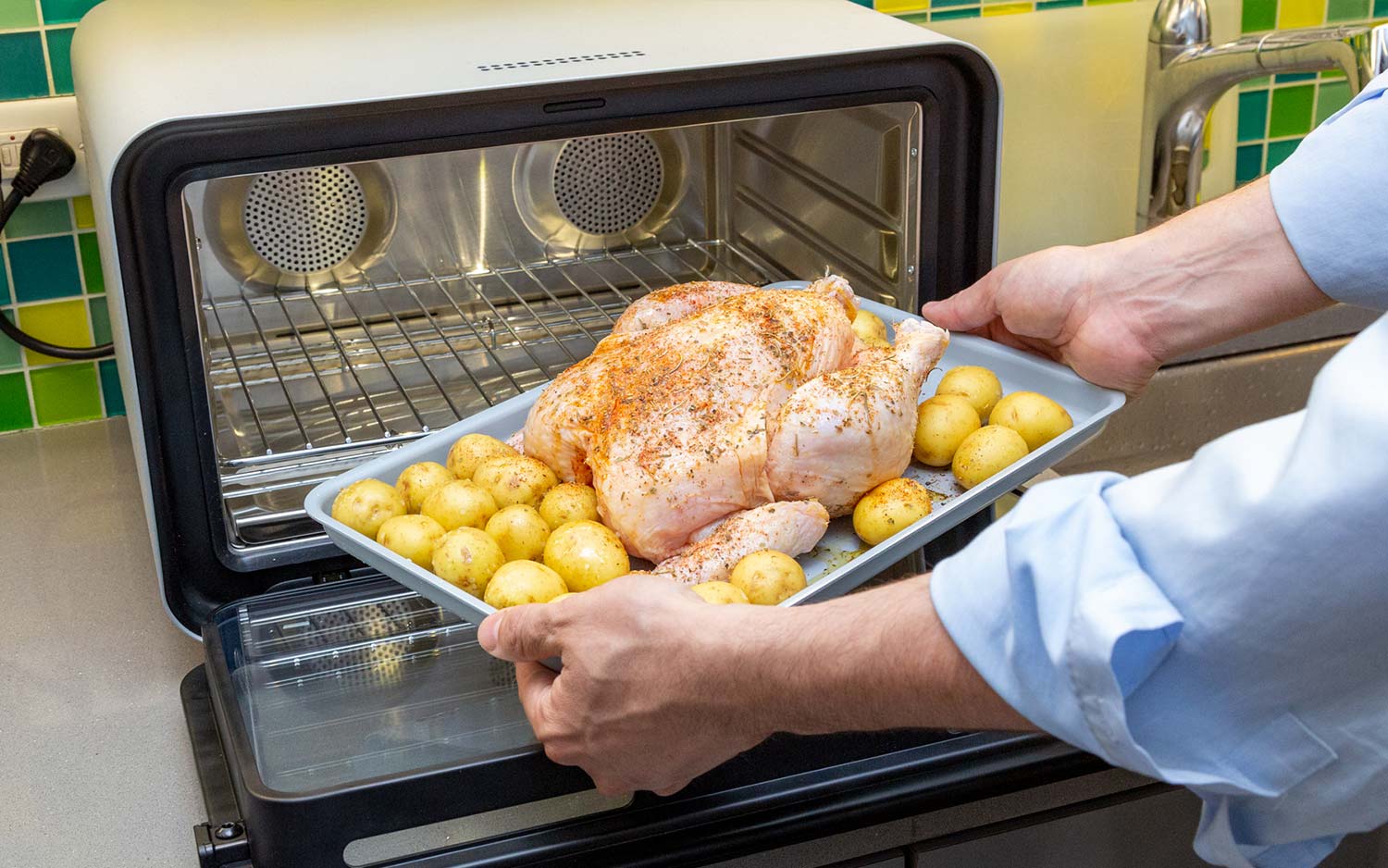
The June’s interior is 1 cubic foot in size, large enough to fit a 16- x 12-inch pan. That’s a bit more spacious than the Brava’s 0.9-cu-ft capacity. When I slid a 4.5-pound chicken into each, the bird had a lot more room to move in the June.
Automatic food recognition
The most magical part of this oven is its ability to automatically recognize what you’re cooking; the built-in AI can identify about 50 different foods, such as chicken (whole, breasts, thighs, legs); eggs; bacon; beef; lamb; pork; several kinds of seafood; pizza and numerous vegetables. You can find a full list here.
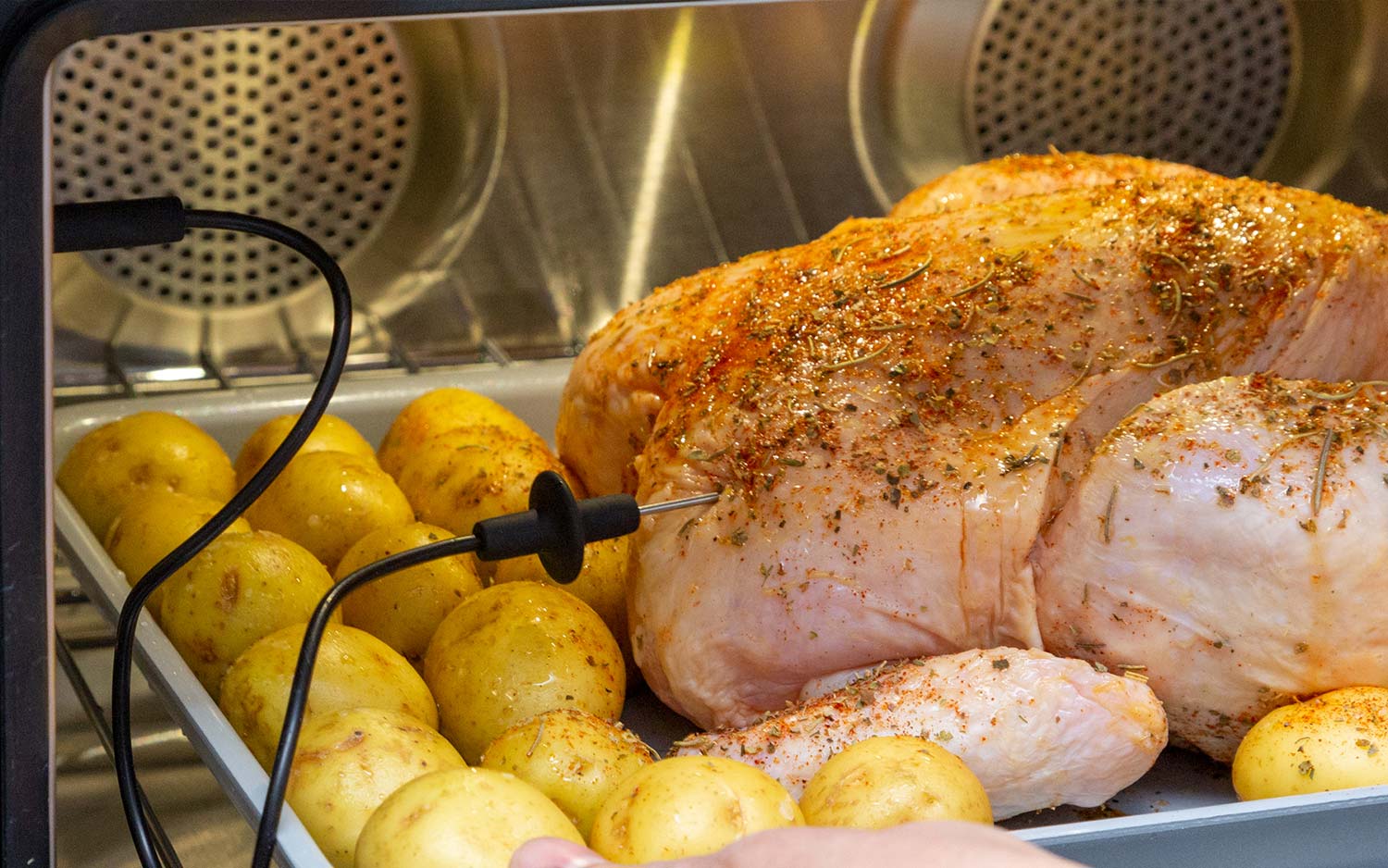
It was pretty awesome to slide something into the oven – say a bagel – and have the oven instantly recognize what it was, and suggest how to cook it. This feature saves you time lost to hunting for a particular recipe.

June also has a partnership with Whole Foods, so if you buy prepackaged food from that store, the oven will know how to cook it. Brava has a similar arrangement with Trader Joes.
As the bird was cooking, one coworker said it smelled like her grandma’s house. We took that as a compliment.
Cooking performance
The June is capable of several cooking modes, including bake, convection oven, air fry, dehydrate, slow cook, broil, toast and warm. That’s comparable to the Brava, so we cooked a number of things side by side in each smart oven to see which one came out on top.
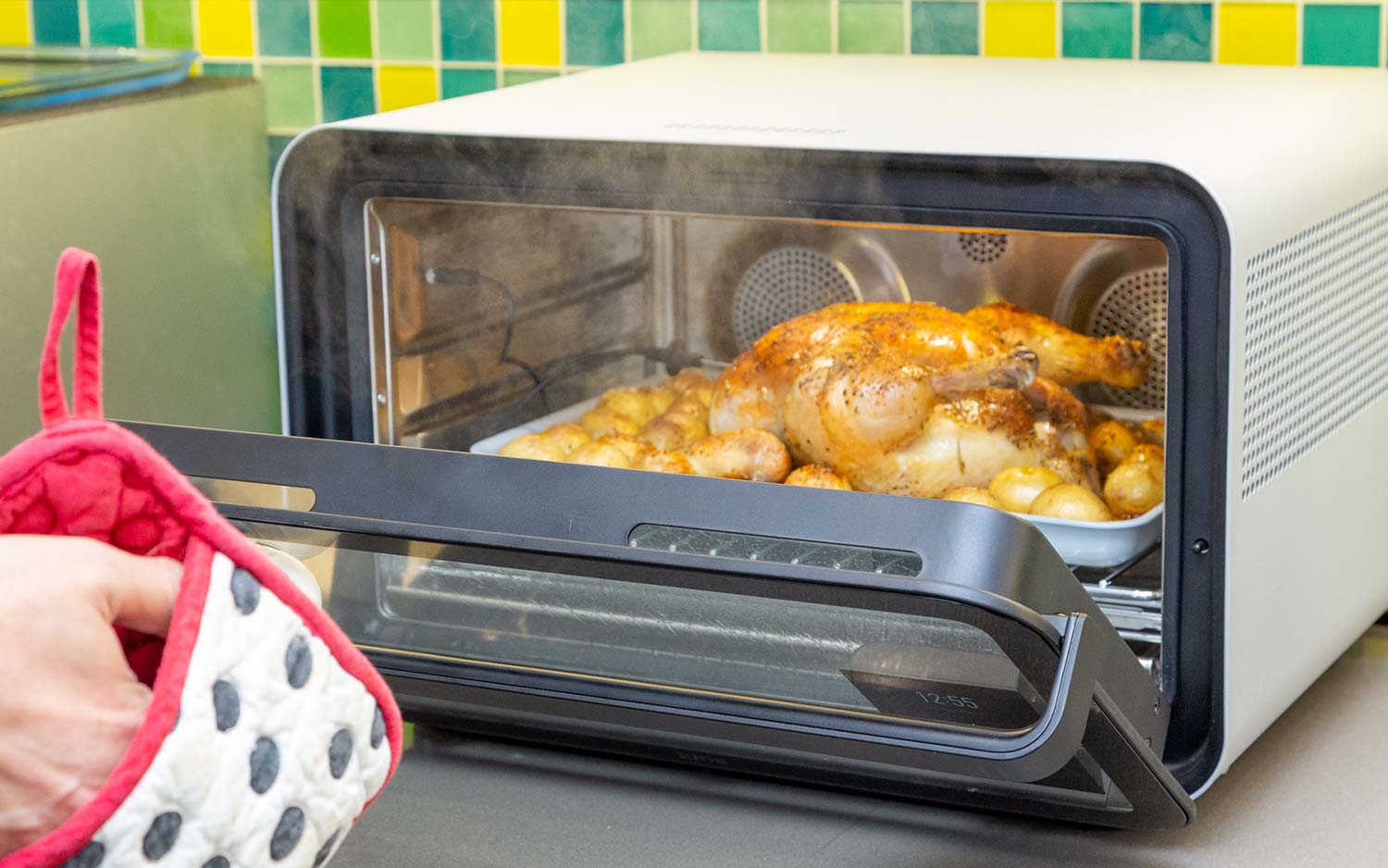
Roast chicken
The first thing I made in the June was a roast chicken with potatoes. While there’s a recipe in the June app, I decided to test the oven’s object-recognition capabilities. As soon as I slid the bird into the oven, it immediately recognized that it was a chicken; the June’s display asked if it was whole or spatchcocked. That was pretty amazing.
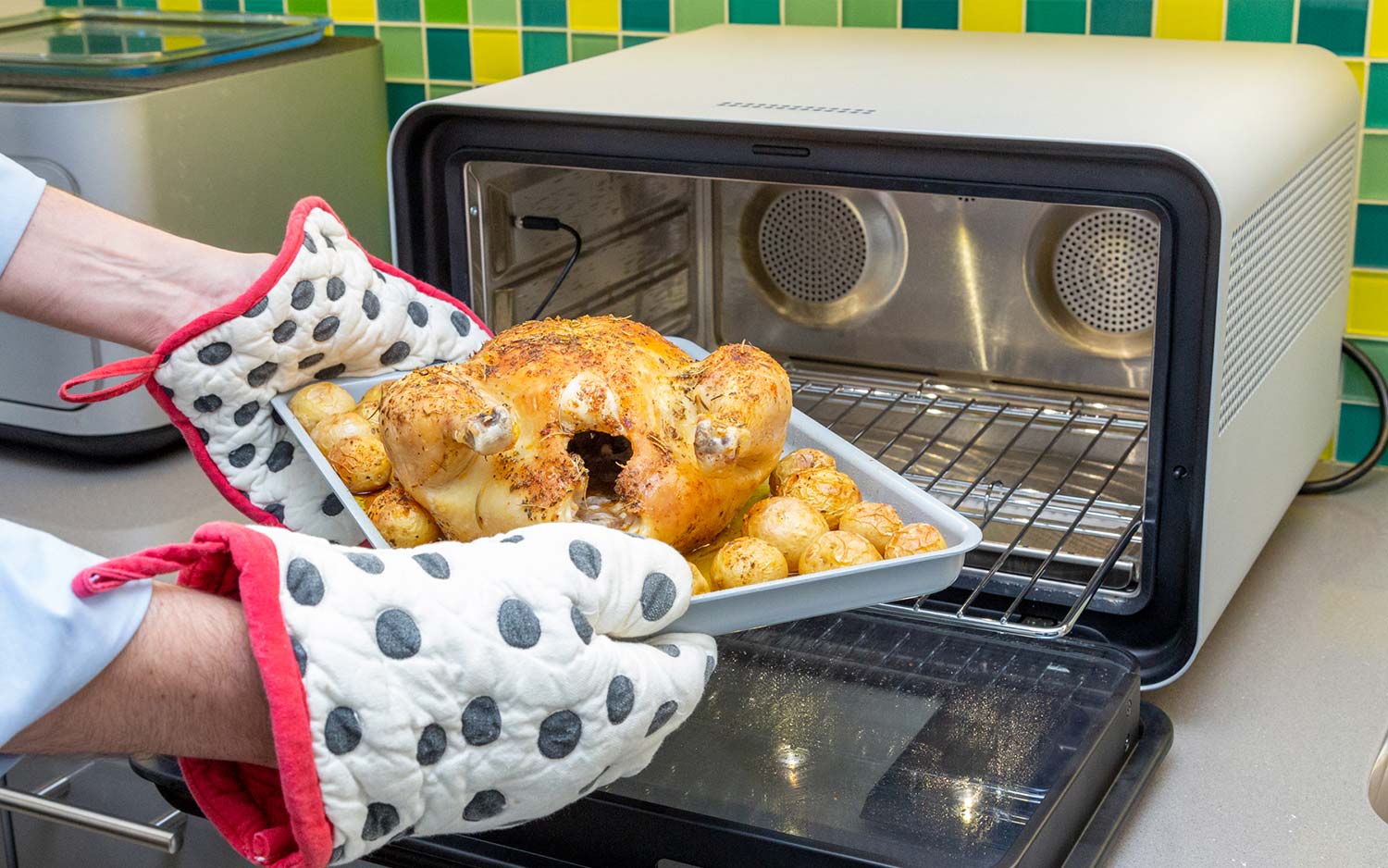
A 4.3-pound chicken took 54 minutes – comparable to the time it took the Brava to cook a similarly-sized bird – and it came out perfect. The thigh and breast meat was juicy and bursting with flavor, and the potatoes were perfectly tender, with a little char on the bottom where they were resting on the pan. As the bird was cooking, one coworker said it smelled like her grandma’s house. We took that as a compliment.
MORE: Whirlpool's New Oven Is Smart Enough to Be Your Sous Chef
Because the June’s pan was a bit larger, it was also easier to add potatoes around the chicken, a definite plus if you want to minimize the amount of extra work you have to do in preparing side dishes.
Breakfast sandwiches
One of my favorite recipes with the Brava oven is its egg and cheese breakfast sandwich. You pop an egg into the egg tray, and bread and cheese on another tray below, and five minutes later, you have a perfectly cooked breakfast sandwich. June has its own breakfast sandwich program – with bacon even – but it’s a bit more labor-intensive. You start out by cooking bacon on the oven’s aluminum tray, and then halfway through, you have to pull out the tray, crack an egg in one corner, and place the bread and cheese in another corner, and let it continue cooking.
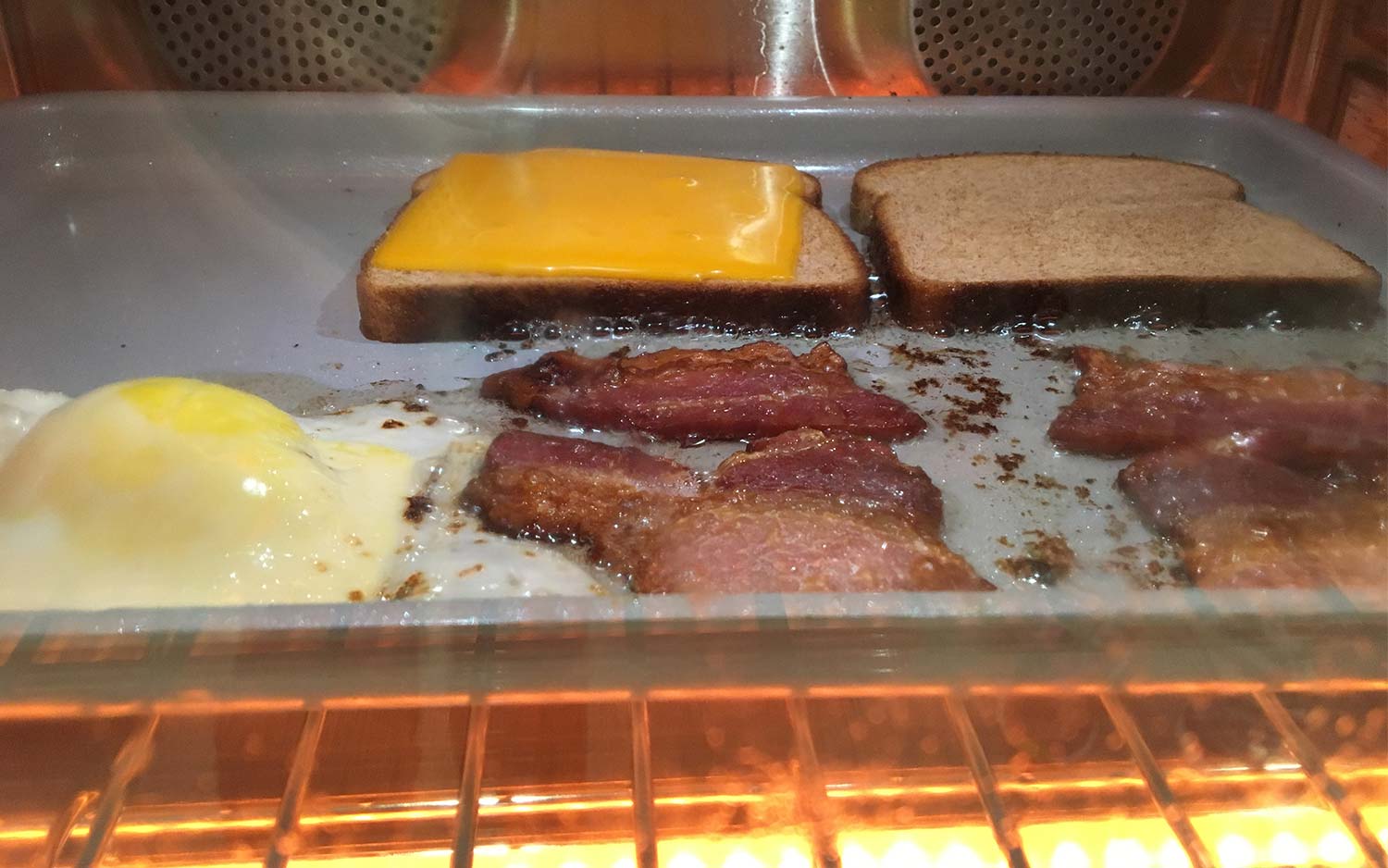
The June wasn’t as neat – the egg spread a bit more than I’d like – but the yolk did get cooked to a nice runniness, and both the bread and the eggs were flavored by the bacon fat, which is never a bad thing. I also liked that I could specify how thick the bacon was, and if I preferred a crispy or chewy slice. The only other issue I had, as with the Brava, is that you can only make one sandwich at a time.
Pizza
We then made four pizzas in both the June and Brava ovens. Each pie was made from 8 ounces of dough (purchased from Whole Foods), and topped with tomato sauce and mozzarella cheese. Brava’s oven was fast – it required no preheating – and the pizza was done in 10 minutes, and had a beautifully browned crust on the underside. Because of Brava’s heating technology, the interior of the oven never reached more than 400 degrees Fahrenheit, but we were very pleased with the results.
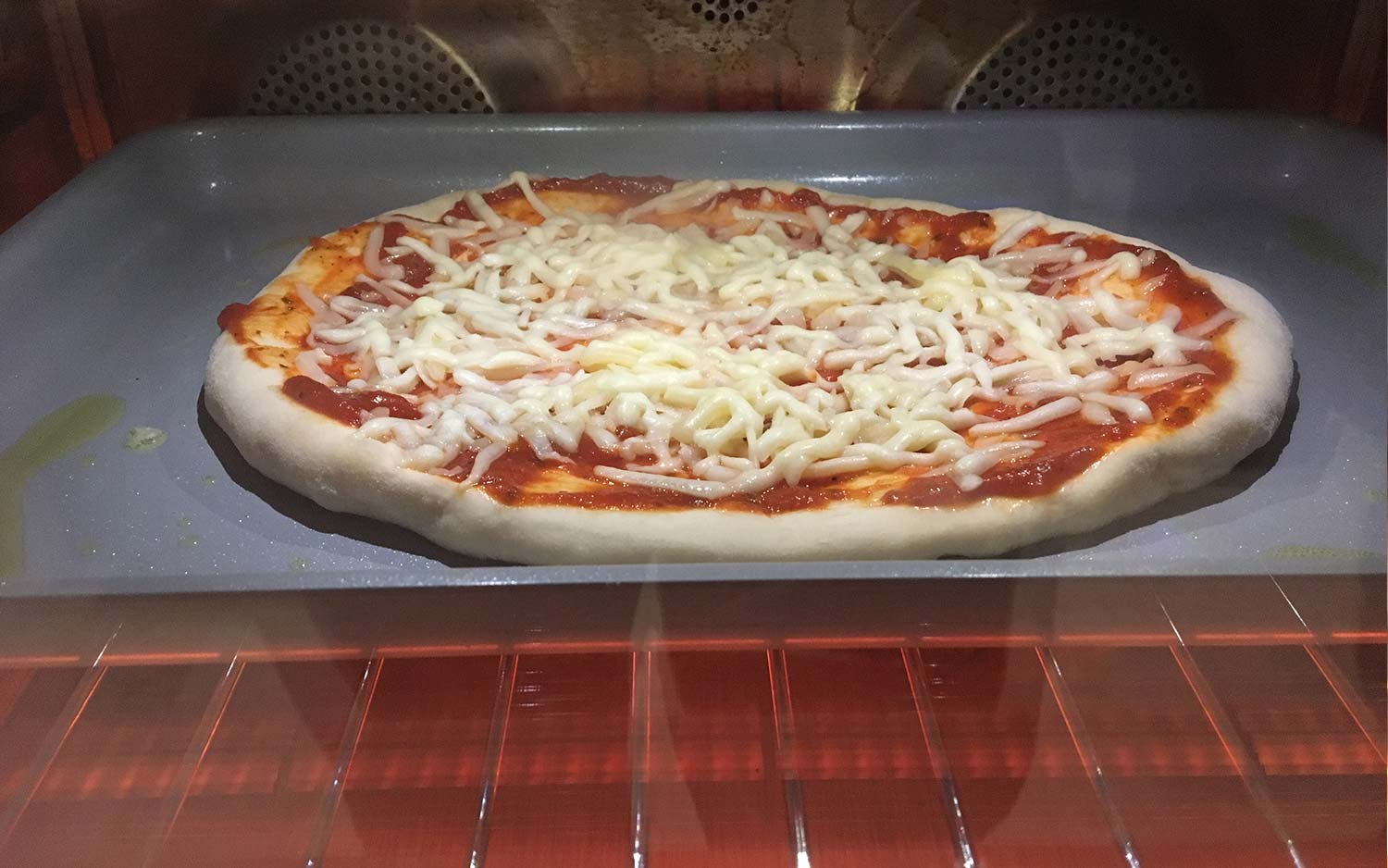
The June required us to preheat it to 475 degrees, which took about 10 minutes; baking the pizza took another 10 minutes, and while the pizza was good — it had a decent char on the bottom — it wasn’t quite as good as Brava’s. We then did a second round of tests, as we had some extra dough, and found a jar of roasted peppers in the office refrigerator. This time, we cooked the Brava pizza as we had before. For the June pizza, when the 10 minutes were up, we pressed the button on the oven’s screen to add an extra three minutes of cooking time. This go-round, we preferred the June’s pizza, which was crispier and lighter.
Steak
We then cooked a New York strip steak in each oven with only salt and pepper as seasonings. The June recognized we had put in beef, but could not identify the particular cut, nor was there a program for New York strip. The Brava had a recipe for the cut, which we used. We then selected medium-rare as a finishing temperature (120 degrees) and started the programs.
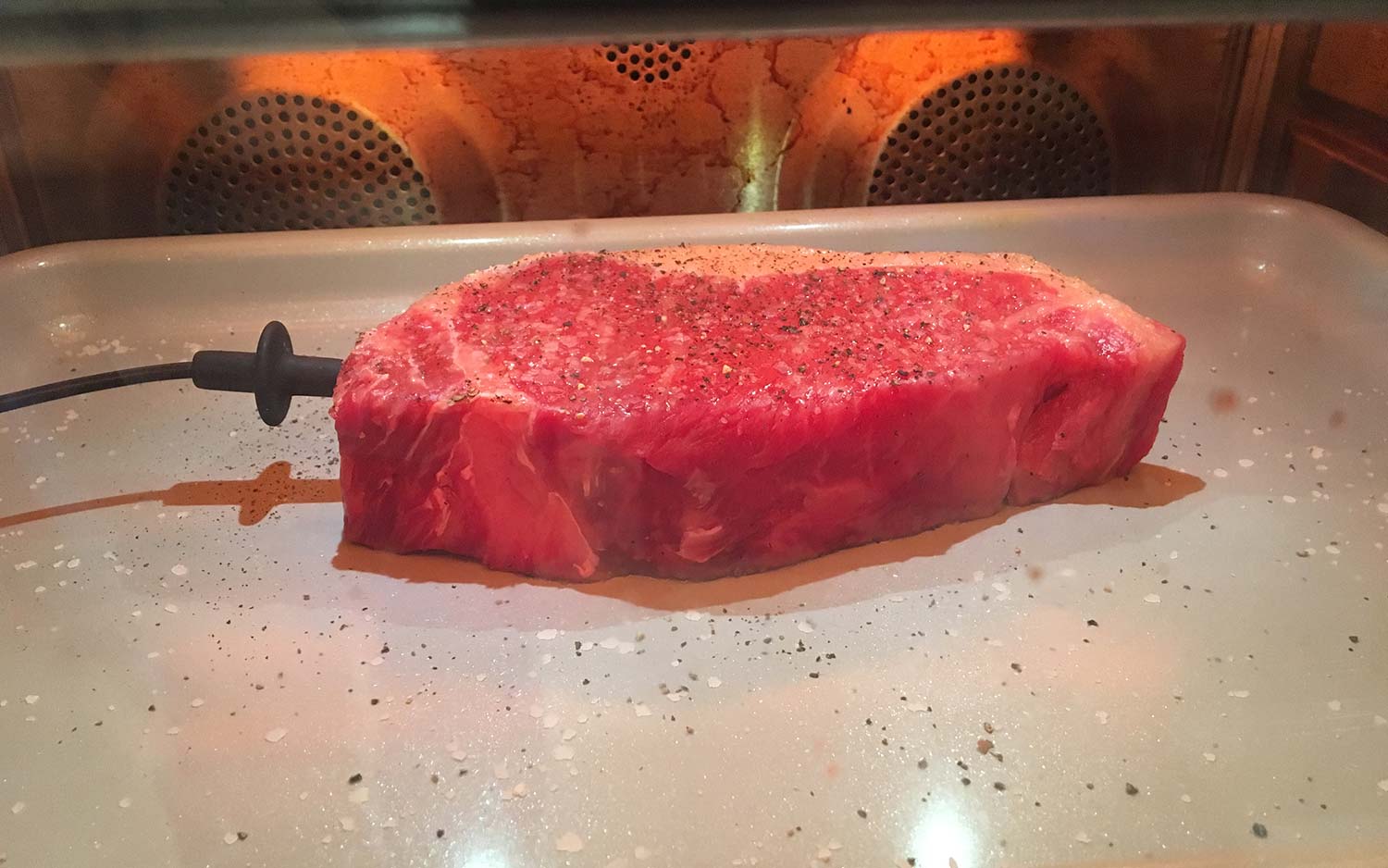
The Brava finished in just under 10 minutes, and put a wonderful sear on both the top and bottom of the steak. Even the fat on the side was crisped up. The June took longer – closer to 18 minutes (we added an additional two minutes to the end) – and only the bottom of the steak had a sear similar to the Brava’s.
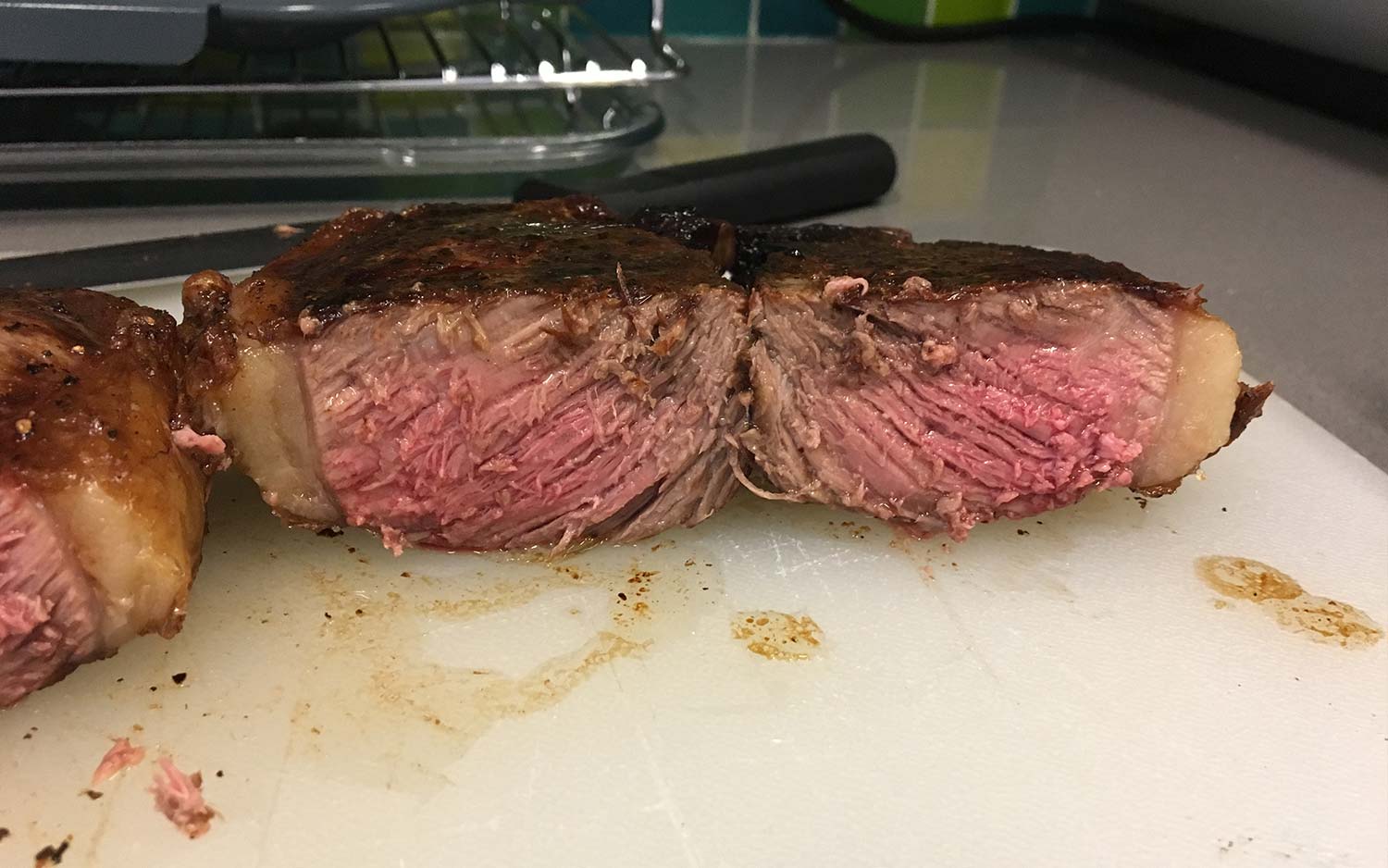
We let both rest for a few minutes before cutting into them – both were closer to medium than medium-rare, but tasted excellent. We’d give the edge to the Brava here, though.
App
June’s app (available for Android and iOS) lets you monitor and control the oven remotely and look up recipes that will also set the oven to the correct temperature and setting. If you adjust the cooking time on a particular recipe – maybe you like your toast a bit darker – the June will ask on subsequent cooks if you want to use that new time.
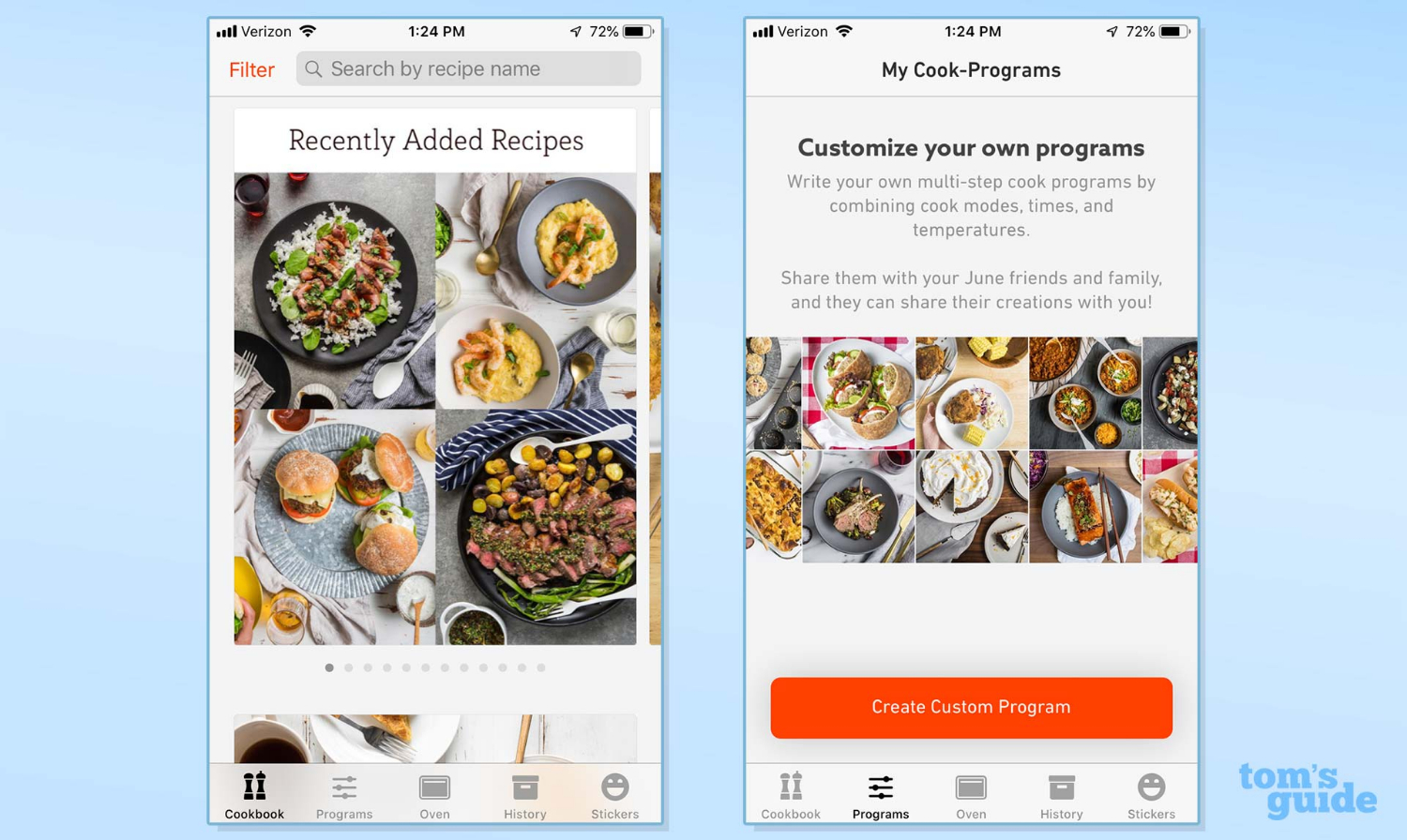
One thing that’s concerning safety-wise: You can start the oven remotely using the app, but should only be able to turn it on from your phone if both it and the oven are on the same network.
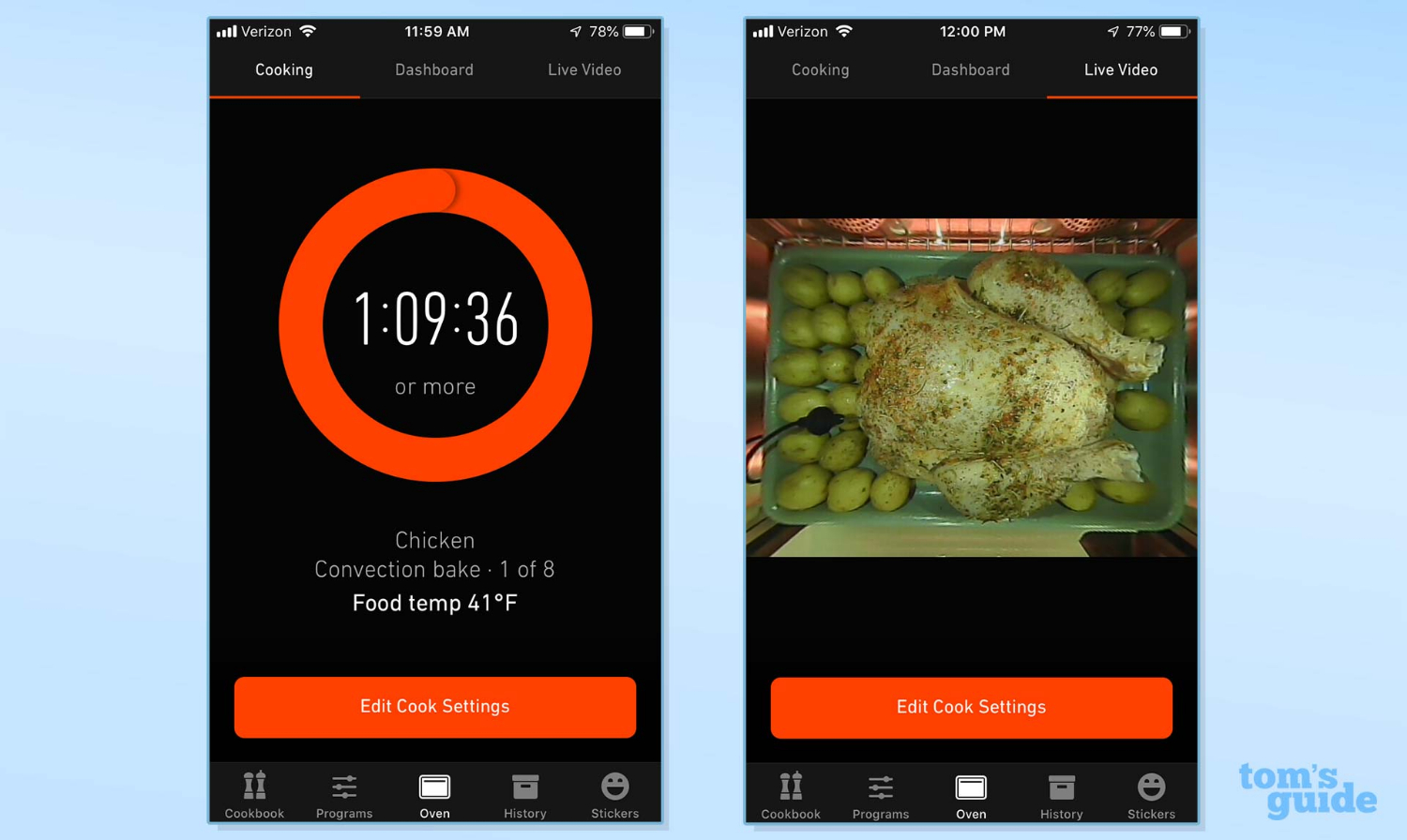
Each of the June's recipes includes a short video of each step, which is handy, especially for newbies. When you’re cooking something in the June, the app shows you a live-video feed from the June’s interior camera, which is placed more strategically (centered on the roof of the chamber) than the Brava’s is (more towards the front). This let me see much more clearly what was being cooked – and made my mouth water all that much more. I just wish I could view the oven’s camera when I wasn’t cooking something: For example, after I finished cooking a chicken, the June’s program ended, but I wanted to check on the bird as it rested.
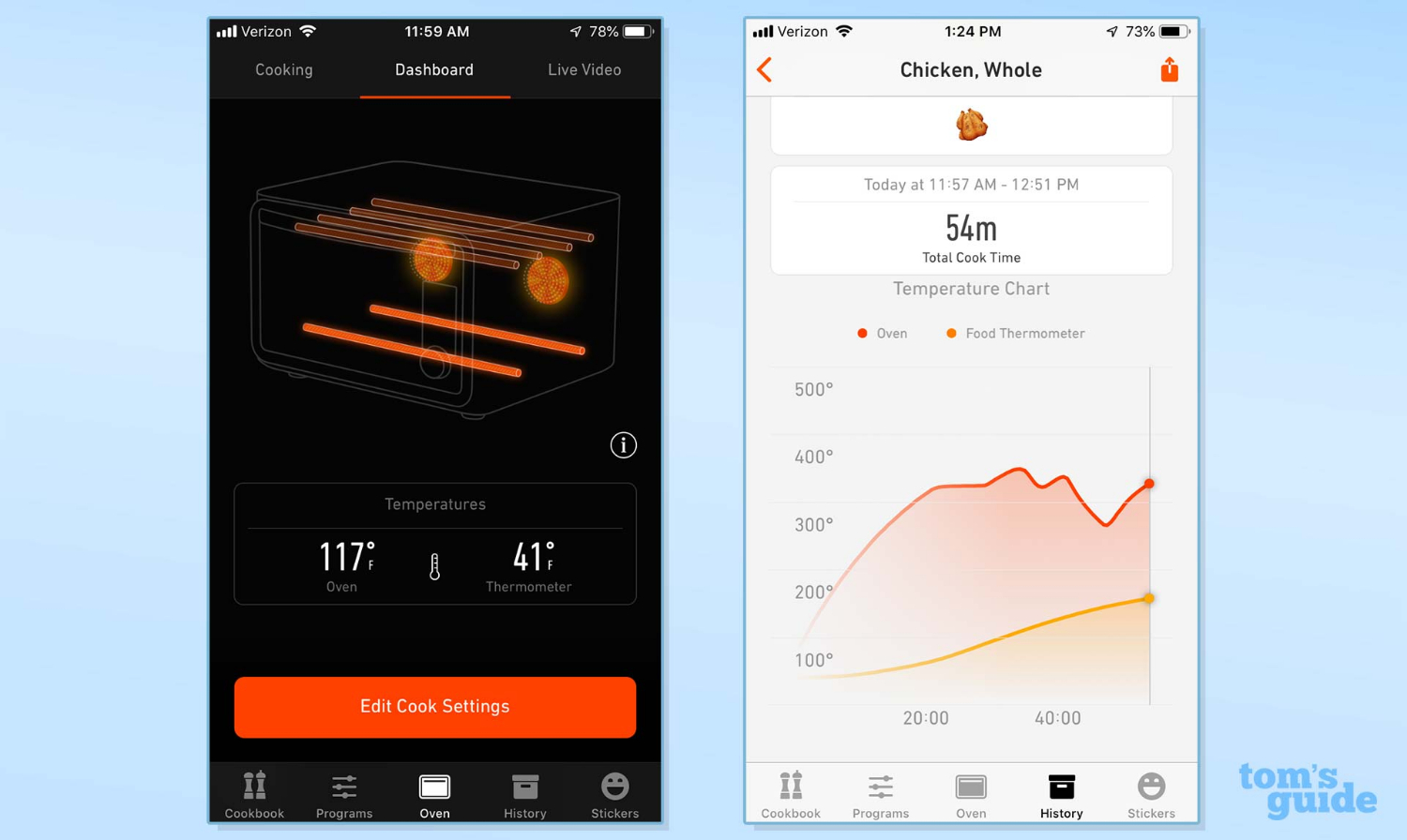
Even better, though, is that after each cook, the app shows a chart of both the oven temperature and the bird’s temperature during the process, and even creates a time-lapse video of the entire cook, which you can share with others. You haven’t lived until you’ve seen a steak get seared.
Price
The June oven costs $699, and comes with a food thermometer, roasting rack, aluminum non-stick pan, a wire shelf and a crumb tray. If you purchase the June Gourmet ($799), you get an additional pan and three air-fry and dehydrate baskets. The Gourmet package also includes a three-year subscription to June’s entire recipe library, which costs $49 per year, or $4.99 per month, but only for iOS. Without a subscription, you can only view 100 out of the 250 total recipes.
MORE: Best Smart Kitchen Gadgets for Home Cooks
That’s a lot better deal than the Brava oven, which starts at around $1,095 and requires a $9.95 monthly subscription to receive not just unlimited access to recipes, but software feature updates, the ability to control the oven from your phone, and consultations with Brava chefs.
Bottom Line
Most of the meals I make at home are for me and my wife. We don’t need – nor do we want – to use our full-size oven for most baking and roasting, as it’s overkill and also takes way too long to heat up. Our toaster oven, on the other hand, is too small to cook more than a few pieces of chicken at a time.
The June, like the Brava, is just the right size for two to three people, is smart enough to know what you’re cooking, and does a great job at whatever you throw into it. So for us, who have some disposable income — as well as counter space — the June could make sense. But we’d need to use it an awful lot to justify spending $699 (plus an annual subscription). For that price, we could buy a full-size gas range.
But if the idea of a smart oven intrigues you, we ultimately liked the June better than the Brava. It’s $400 less expensive, can hold more stuff, identify food on sight, and gives you a better view of what’s cooking, both through its camera placement and because it has a clear front door. At some point, all of our ovens will be connected and have cameras inside them; the June gives you a taste of the future.
Credit: Tom's Guide

Michael A. Prospero is the U.S. Editor-in-Chief for Tom’s Guide. He oversees all evergreen content and oversees the Homes, Smart Home, and Fitness/Wearables categories for the site. In his spare time, he also tests out the latest drones, electric scooters, and smart home gadgets, such as video doorbells. Before his tenure at Tom's Guide, he was the Reviews Editor for Laptop Magazine, a reporter at Fast Company, the Times of Trenton, and, many eons back, an intern at George magazine. He received his undergraduate degree from Boston College, where he worked on the campus newspaper The Heights, and then attended the Columbia University school of Journalism. When he’s not testing out the latest running watch, electric scooter, or skiing or training for a marathon, he’s probably using the latest sous vide machine, smoker, or pizza oven, to the delight — or chagrin — of his family.
